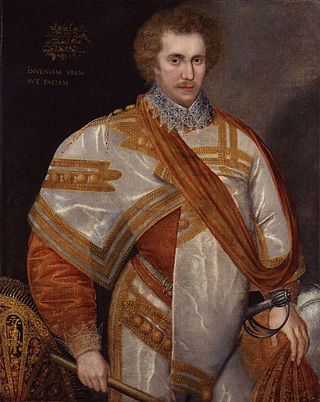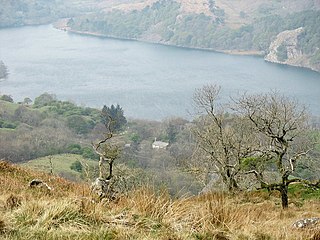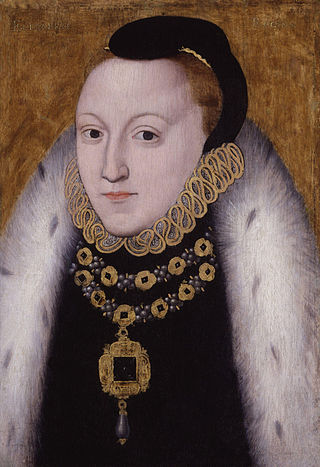Related Research Articles

Robert Sidney, 1st Earl of Leicester, was an English courtier, soldier, and landowner. He was chamberlain to Anne of Denmark.
John Colville, Scottish clergyman, judge, politician and author, was the son of Robert Colville of Cleish, in Kinross.
Sir John Spilman was a Lindau, German-born entrepreneur who founded the first commercially successful paper-mill in England, establishing a factory on the River Darenth in Dartford, Kent in 1588. Spilman was also jeweller to Queen Elizabeth I, and was knighted by King James I.
Sir Richard Martin was an English goldsmith and Master of the Mint who served as Sheriff and twice as Lord Mayor of the City of London during the reign of Elizabeth I.
Sir Edward Darcy was an English politician and courtier. His monopoly by way of having a wide patent on playing cards was declared illegal in 1602.
Sir David Foulis was a Scottish baronet and politician.
Sir Richard Cockburn of Clerkington, Lord Clerkintoun (1565–1627) was a senior government official in Scotland serving as Lord Privy Seal of Scotland during the reign of James VI.
Costume and gold and silver plate belonging to Elizabeth I were recorded in several inventories, and other documents including rolls of New Year's Day gifts. Arthur Jefferies Collins published the Jewels and Plate of Queen Elizabeth I: The Inventory of 1574 from manuscripts in 1955. The published inventory describes jewels and silver-plate belonging to Elizabeth with detailed references to other source material. Two inventories of Elizabeth's costume and some of her jewellery were published by Janet Arnold in Queen Elizabeth's Wardrobe Unlocke'd.
Thomas Foulis was a Scottish goldsmith, mine entrepreneur, and royal financier.
Sir Francis Gofton was an English courtier and administrator. He was an auditor of royal accounts and jewels, Chief Auditor of the Imprest from 1597 and Auditor of Mint from August 1603. Gofton acquired the manor of Heathrow, and houses in Stockwell and West Ham. He was often called "Auditor Gofton". The surname is frequently transcribed as "Goston" or "Guston"
George Nicholson or Nicolson, was an English diplomat in Scotland.
Mary Radcliffe or Ratcliffe (1550-1617) was a courtier of Queen Elizabeth I of England.

Queen Elizabeth I of England paid a subsidy to King James VI of Scotland from 1586 to 1602. This enabled her to influence James by delaying or deferring payments to his diplomats in London. Records survive of the yearly amounts, and details of the expenditure in some years. A large proportion of the money was spent on the royal wardrobe of James and Anne of Denmark. Some royal expenses were met by Anne of Denmark's dowry, which was known as the "tocher". The regular incomes of the Scottish crown were feudal rents, customs, and "compositions" charged on grants of land. Accounts for royal incomes and payments survive as the exchequer rolls and lord treasurer's accounts and have been published as historical sources.
Cordell Annesley was an English courtier.

The jewels of Anne of Denmark (1574–1619), wife of James VI and I and queen consort of Scotland and England, are known from accounts and inventories, and their depiction in portraits by artists including Paul van Somer. A few pieces survive. Some modern historians prefer the name "Anna" to "Anne", following the spelling of numerous examples of her signature.

John Williams was a Welsh-born goldsmith based in London who worked for the royal family.
The Hermit's Welcome at Theobalds was an entertainment for Elizabeth I performed in May 1591, based around a hermit.

Affabel Partridge was a London goldsmith who served Elizabeth I. He is thought to have marked his work with a hallmark of a bird.

Nicholas Williamson was an English lawyer and Catholic recusant in the 1590s. He was arrested in 1595 after planning a visit to the court of James VI of Scotland. The Jesuit William Crichton had hoped that Williamson would encourage the ambition of James VI for the throne of England.

Edward Cary or Carey or Carye was an English courtier and Master of the Jewel Office for Elizabeth I and James VI and I.
References
- ↑ H. D. W. Sitwell, 'The Jewel House and the Royal Goldsmiths', Archaeological Journal, 117 (1960), p. 150.
- ↑ Arthur J. Collins, Jewels and Plate of Queen Elizabeth (London, 1955), p. 559 no. 1459.
- ↑ Arthur J. Collins, Jewels and Plate of Queen Elizabeth (London, 1955), p. 572 no. 1514.
- ↑ HMC 6th Report: Wykeham-Martin (London, 1877), p. 468.
- ↑ Mary Anne Everett Green, Calendar State Papers Domestic, 1591-1594 (London, 1867), p. 559.
- ↑ Mary Anne Everett Green, Calendar State Papers Domestic, 1595-1597, p. 418.
- ↑ HMC Salisbury Hatfield: 1600, vol. 10 (London, 1906), pp. 356-9.
- ↑ Arthur J. Collins, Jewels and Plate of Queen Elizabeth (London, 1955), pp. 567 no. 1492, 571-23 no. 1512.